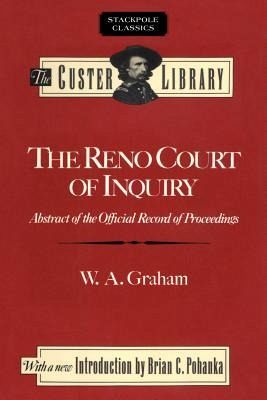
Reno Court of Inquiry
Versandkostenfrei!
Versandfertig in über 4 Wochen
20,99 €
inkl. MwSt.

PAYBACK Punkte
10 °P sammeln!
“The inquiry quickly developed into a broad investigation of the manner in which the battle was fought, and competent historians and students consider the record of its proceedings to be the chief and most important repository of authentic detailed information on the subject. The original official record, some 1,300 pages in length, was held in the confidential files of the Judge Advocate General’s Office until 1941, when it was turned over to the National Archives. In 1951 a verbatim edition of the official record, limited to 125 copies, was published by me. This volume is an abstract of ...
“The inquiry quickly developed into a broad investigation of the manner in which the battle was fought, and competent historians and students consider the record of its proceedings to be the chief and most important repository of authentic detailed information on the subject. The original official record, some 1,300 pages in length, was held in the confidential files of the Judge Advocate General’s Office until 1941, when it was turned over to the National Archives. In 1951 a verbatim edition of the official record, limited to 125 copies, was published by me. This volume is an abstract of that record.” The search for a scapegoat began almost immediately after news of the disaster at the Little Big Horn reached the press and public in the early summer of 1876. Custer’s partisans accused Captain Frederick W. Benteen, the senior captain, and Marcus A. Reno, the regiment’s second in command, of cowardice in their failure to go to Custer’s aid. Benteen was largely cleared in the public mind, but Reno was not. In 1878 an investigation by the military committee of the House of Representatives was demanded by Frederick Whittaker, who had bitterly assailed Reno and Benteen in his book The Complete Life of Gen. George A. Custer. After Congress adjourned without taking action, Reno wrote to President Rutherford B. Hayes, asking that a court of inquiry be convened to determine the truth of Whittaker’s charges. The court convened in Chicago on January 13, 1879, and adjourned a month later after extended hearings. The original official record, about 1,300 pages, was held in the Judge Advocate General’s office until 1941, when it was presented to the National Archives. In 1951 Colonel Graham published 125 verbatim copies of the complete record. The Reno Court of Inquiry is a condensed version of the substance of the evidence, restated in narrative form. Historians and students of Custer’s fight have long searched for rare copies of this primary source, finally back in print for a new generation to consult and enjoy. Brian Pohanka’s new introduction contains surprising in formation—unknown to W. A. Graham in the 1950s—that may explain the reasons behind Reno’s actions.


